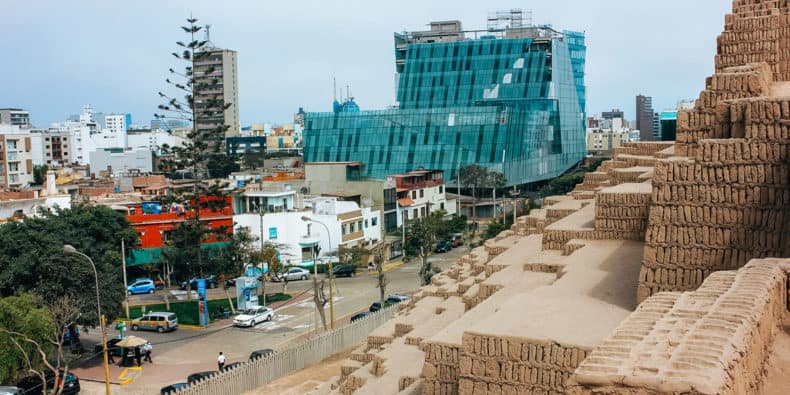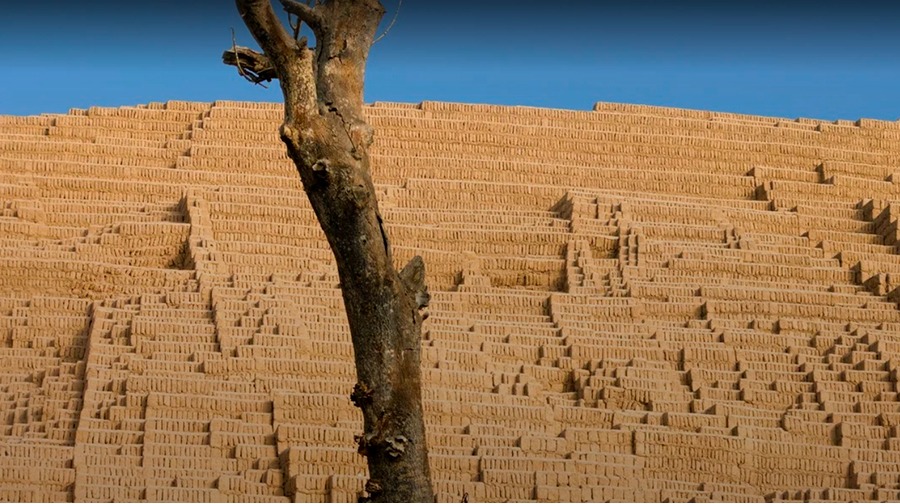The Huaca Pucllana: A Massive Ancient Pyramid You Probably Never Knew Existed
Lima, Peru is home to many wonders of the world including the Huaca Pucllana pyramid. Huaca Pucllana served as an administrative and ceremonial center in the pre-Inca Lima culture to elite clergymen. Today, Huaca Pucllana now offers its visitors a glimpse into the history of the ancient culture.
About Huaca Pucllana
The Huaca Pucllana is an adobe and clay pyramid located in the Miraflores district in centralized Lima, Peru. The pyramid has seven staggered levels.
The inhabitants of the area who built the pyramid lived 200 AD to 700 AD. Huaca Pucllana itself, however, was built around 500 AD. The process of uncovering Huaca Pucllana began in 1981 and in 1991 it became a historical and cultural park.
The pyramid once served as an important ceremonial and administrative center for the Lima Culture in the region. There is a plaza that surrounds the structure and a large wall dividing it into separate sections. A section of the plaza has benches and deep pits. Inside of this section is where they would perform ceremonies as well as make their sacrifices and offerings.
Another area of the plaza had an administrative section. Various small clay and adobe huts were once located inside the enclosure. You can find the intact remains of the “Señor de los Unkus” (The Lord of the Unkus). His remains were uncovered and are located in one of the tombs on the site.


The ancient civilization responsible for building the massive pyramid was notable for its architectural style, engineering skill as well as their mastery of irrigation which eventually led them to spread across a considerable amount of territory.
Surrounded by a vast desert, the ancient culture created intricate irrigation networks that allowed them to transport water from springs and rivers to their settlements.

The Pyramid, just as the Huaca del Sol and Huaca de la Luna, was built using adobe bricks. Millions of Adobe bricks.
In 1991, the Peruvian Cultural Institute and the Municipality of Miraflores signed an agreement in 1991 that allowed the Huaca Pucllana pyramid to become a historical and cultural park in the city.

It is believed that the site where the pyramid is located was home to a number of smaller pyramids and plazas. The smaller structures are thought to have grown over time, as each new generation added to them.
The administrative center of Huaca Pucllana was composed of several patios, platforms and storage facilities. Scholars argue that the pyramid was mostly used as an administrative site for the irrigation zone of the city.
The entire pyramid complex is divided by a large wall that was built running from north to south. The site was also home to spaces that were most likely used by the ancients as meeting spots, storage rooms, and other production-related activities.
The western part was the religious center and is home to the pyramid which rises a towering 22 meters into the air. The Pyramid which is more than 400 meters wide was built with adobe bricks stacked horizontally on top of each other.
The pyramid, much smaller in size compared to the Great Pyramid of Giza was nonetheless a tremendous engineering feat of ancient times. The pyramid was most likely visible from several miles away when it was complete, some 1,500 years ago.
Today, it stands as evidence of the ingenuity and architectural complexity of pre-Columbian civilizations and developed cultures inhabiting the American continent long before the Europeans set foot on the New Continent.
The entire site shows the rich history of the region, spanning back to a time long before the Inca rule of the region.
Looking back at its size, complexity, and history, one cannot help but stand awestruck by the Pyramid’s irradiating beauty which in many images looks almost as if it was built by Minecraft builders in the real world.





